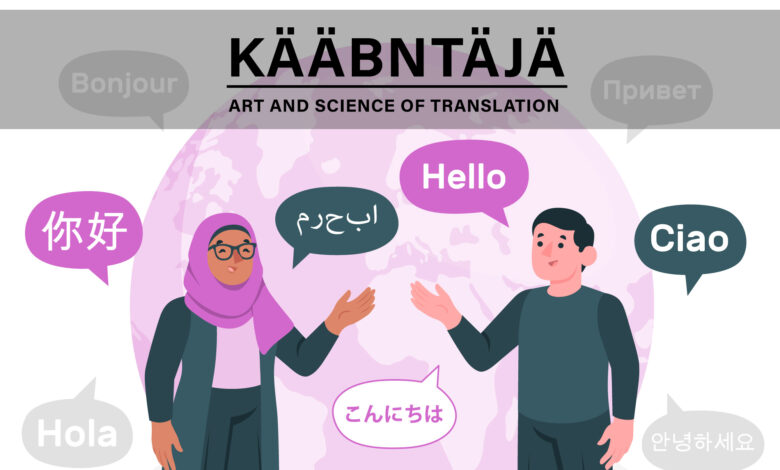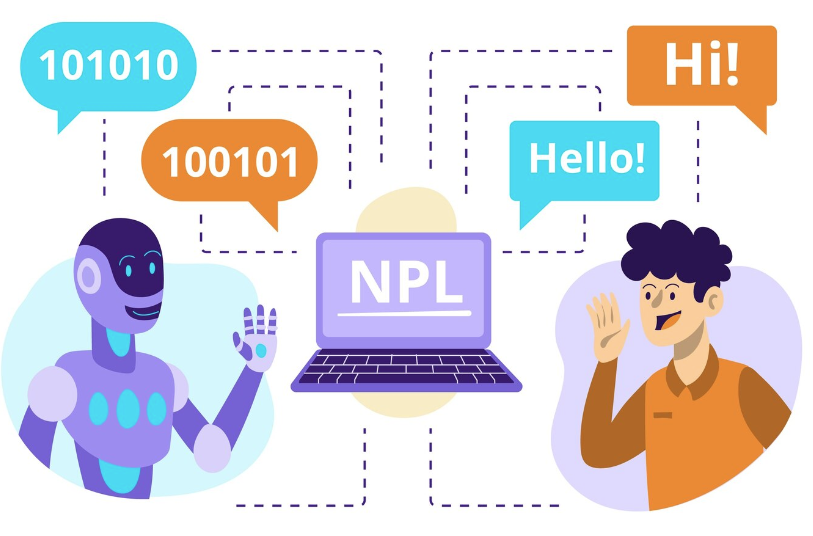Kääbntäjä: Exploring the Art and Science of Translation! Complete Details

In the world of languages and communication, one term that has been gaining significant attention is “Kääbntäjä.” But what exactly is Kääbntäjä, and why is it important? Let’s delve into this intriguing concept.
Table of Contents
What is Kääbntäjä?
Kääbntäjä, originating from the Finnish language, refers to the art and science of translation. It encompasses the process of converting text or speech from one language into another while maintaining its essence, context, and meaning. Kääbntäjä is not merely about substituting words; it involves understanding cultural nuances, idiomatic expressions, and linguistic subtleties to ensure accurate communication across languages.
History and Origins
The roots of Kääbntäjä can be traced back to ancient civilizations where the need for cross-cultural communication led to the development of translation techniques. Over time, as societies interacted and traded, the demand for proficient translators grew, facilitating the exchange of knowledge, ideas, and goods.
The Importance of Kääbntäjä
Kääbntäjä plays a crucial role in various aspects of modern society, contributing to effective communication and fostering global connections.
In Communication

In a world characterized by linguistic diversity, Kääbntäjä bridges the gap between individuals and communities speaking different languages. It facilitates international diplomacy, business transactions, cultural exchange, and academic collaboration. Without Kääbntäjä, many conversations would be lost in translation, hindering meaningful interactions and mutual understanding.
In Globalization
As globalization continues to reshape the global landscape, the need for Kääbntäjä becomes more pronounced. Businesses expanding into new markets rely on accurate translations to connect with customers, negotiate contracts, and navigate legal frameworks. Similarly, multilateral organizations, such as the United Nations, depend on skilled translators to facilitate dialogue and cooperation among member states.
How Kääbntäjä Works
The process of Kääbntäjä involves a blend of linguistic expertise, cultural competence, and technological tools to ensure precise and contextually relevant translations.
Translation Techniques

Translators employ various techniques, such as direct translation, localization, and transcreation, depending on the nature of the content and the target audience. Direct translation aims to preserve the original text’s meaning without altering its structure or cultural references. Localization involves adapting the translation to suit the cultural preferences and linguistic conventions of the target audience, ensuring greater resonance and impact. Transcreation goes a step further by creatively reimagining the content to evoke similar emotions and reactions in the target language, particularly in marketing and advertising contexts.
Challenges Faced
Despite advancements in translation technology, Kääbntäjä presents numerous challenges, including linguistic ambiguity, cultural nuances, and idiosyncratic expressions. Translators must navigate these obstacles with precision and sensitivity to avoid misinterpretation or miscommunication. Additionally, machine translation tools, while efficient, may struggle with context-dependent translations and linguistic nuances, underscoring the continued need for human translators.
Also Read Oprekladač: Discover The Future of Technology
Kääbntäjä in the Digital Age
In an era defined by rapid technological innovation, Kääbntäjä has undergone significant transformation, leveraging digital tools and artificial intelligence to enhance efficiency and accuracy.
Role in Technology
The advent of machine translation algorithms, such as neural machine translation (NMT), has revolutionized the translation industry, enabling faster and more scalable translations. These algorithms learn from vast amounts of bilingual data to generate contextually accurate translations, albeit with varying degrees of fluency and naturalness. Additionally, translation management systems (TMS) streamline the translation process by automating workflow management, terminology consistency, and quality assurance.
Advancements and Innovations

Beyond machine translation, Kääbntäjä has benefited from advancements in natural language processing (NLP), speech recognition, and language modeling. Neural networks trained on multilingual corpora can now perform tasks such as simultaneous interpretation, sentiment analysis, and language generation with remarkable proficiency. Moreover, collaborative translation platforms and crowd-sourced initiatives have democratized access to translation services, empowering linguists and language enthusiasts worldwide.
The Future of Kääbntäjä
As technology continues to evolve and globalization accelerates, the future of Kääbntäjä holds both promise and challenges, shaping the way we communicate and interact in an increasingly interconnected world.
Potential Developments
Emerging technologies, such as quantum computing and blockchain, offer new possibilities for enhancing translation accuracy, security, and scalability. Quantum algorithms could optimize translation processes by leveraging quantum parallelism and entanglement to explore vast linguistic spaces more efficiently. Similarly, blockchain-based translation platforms could ensure data integrity, transparency, and traceability, addressing concerns related to privacy, copyright, and intellectual property rights.
Impact on Industries
The evolution of Kääbntäjä is poised to impact various industries, including e-commerce, tourism, healthcare, and education. Businesses that embrace multilingualism and cultural diversity stand to gain a competitive edge in global markets, reaching broader audiences and fostering stronger customer relationships. Likewise, educational institutions and language service providers must adapt their curricula and services to meet the evolving demands of the digital age, emphasizing proficiency in translation, interpretation, and cross-cultural communication.
Conclusion
In conclusion, Kääbntä-jä serves as a cornerstone of global communication, enabling individuals and organizations to transcend linguistic barriers and engage in meaningful dialogue. From ancient civilizations to the digital age, the art and science of translation continue to evolve, driven by human ingenuity and technological innovation. As we navigate an increasingly interconnected world, the importance of Kääbntä-jä cannot be overstated, underscoring its pivotal role in shaping our collective future.
Frequently Asked Questions:
What languages can Kääbntäjä translate?
Kääbntäjä can translate virtually any language pair, including rare and less widely spoken languages, depending on the availability of skilled translators and linguistic resources.
How accurate are machine translations compared to human translations?
While machine translations have improved significantly in recent years, they may still struggle with context-dependent nuances and cultural subtleties. Human translations, on the other hand, offer greater accuracy and nuance, particularly for complex or specialized content.
Can Kääbntäjä translate spoken language in real-time?
Yes, with advancements in speech recognition and simultaneous interpretation technologies, Kääbntäjä can translate spoken language in real-time, enabling seamless multilingual communication during conferences, meetings, and live events.
Are there ethical considerations in Kääbntä-jä?
Ethical considerations in Kääbnt-äjä include issues related to confidentiality, accuracy, cultural sensitivity, and bias. Translators must adhere to professional standards and ethical guidelines to ensure responsible and ethical conduct in their practice.
How can I become a professional translator?
Becoming a professional translator requires proficiency in at least two languages, specialized training or education in translation studies, and practical experience in the field. Additionally, certification from recognized translation associations or institutions can enhance credibility and marketability in the industry.
Is “kääbntä-jä” solely about written language?
No, “kääbntä-jä” encompasses both written and spoken communication. Interpreters specialize in spoken translation, while translators primarily work with written texts.
What role does technology play in “kääbntäjä”?
Technology, such as machine translation algorithms and CAT (Computer-Assisted Translation) tools, has significantly impacted the field of “kääbntä-jä,” improving efficiency but also raising questions about the future of human translators.
What is the future outlook for “kääbntä-jä”?
The future of “kääbntä-jä” is likely to be shaped by technological advancements, evolving language dynamics, and the increasing need for global communication. While technology will continue to play a significant role, human expertise and cultural sensitivity will remain indispensable.
What is the importance of “kääbntä-jä” in today’s world?
In our increasingly globalized society, “kääbntä-jä” plays a vital role in facilitating cross-cultural communication, enabling understanding and collaboration across linguistic divides.
What are the ethical considerations in “kääbntä-jä”?
Ethical considerations in “kääbntä-jä” include maintaining accuracy and integrity, respecting confidentiality, avoiding biases, and preserving cultural nuances.
If you found our content helpful don’t forget to share it on your social media: Twitter
More Articles: Home




